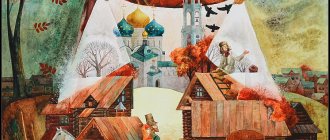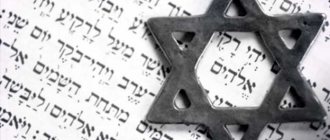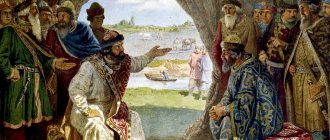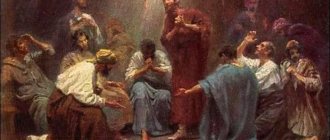The teachings of the Buddha are one of the most relevant philosophical and practical teachings in the modern world. Without being attached to any dogmas, blind beliefs or extreme fanaticism, the Teachings of the Buddha clearly and understandably explain: what are the causes of suffering, how can they be eliminated, and what real practical tools exist for this. The teachings that the Buddha gave are based primarily on his personal experiences, which he experienced through self-effort, austerities, yoga and meditation. And Buddha also called on others not to blindly believe what he says, but to check everything through personal experience.
Buddha Shakyamuni left our world; there are several versions of where his path goes next: whether he went into Mahaparinirvana or continued to reincarnate, traveling through the worlds of samsara and instructing living beings in the Dharma. Both versions are equally probable and have the right to exist. But since the Teacher left the world, in the practice of his Teaching we can only be guided by those texts that remained after the departure of the Buddha.
TYPES OF REVELATIONS.
1. Authentic dreams: Allah sends down to the Prophets the revelations that He wanted to send down through dreams. The first revelations were given to our Prophet, peace and blessings of Allah be upon him, in a dream. And then everything that He saw in a dream happened in reality.
2. Inspiration: Allah sends down what He wants, without intermediaries, directly into the hearts of the Prophets.
3. Hearing the Speech of Allah without seeing Him, without mediation, without place, without image, without direction. Allah's speech does not consist of letters and sounds.
4. Through the mediation of an Angel. Revelations conveyed to the Prophets through an Angel.
The angel conveying the Speech of Allah sometimes came to the Prophets in his true form, sometimes in the form of a man. Everyone nearby saw and heard him; sometimes, when the Angel conveyed revelations, the Prophets heard Him, but did not see Him.
With this type of Revelation, through the Angel Gabriel, who is the most important Angel, the Holy Quran was revealed to our Prophet Muhammad, peace and blessings of Allah be upon him.
Qur'anic sciences
Interpretation
There are a huge number of commentaries on the Koran aimed at clarifying the meaning of the verses and clarifying their knowledge. The Arabic word "tafsir" means "clarification", "revelation". Tafsirs have an early history. Muhammad was the first to teach the meaning of the verses to the early Muslims. The early interpreters included some companions such as Ali ibn Abu Talib, Ibn Abbas, Ibn Masud, Ibn Umar. Interpretation was dedicated to highlighting the linguistic aspects of a verse, to the context of revelation, and sometimes to interpreting one verse by means of another. The doctrine of the interpretation of the Koran began to take shape as an independent field of science in the 10th century, when, through the efforts of the famous theologian at-Tabari and commentators of his generation, such as Ibn Abu Hatim, the early period of interpretation of the Koran was summed up. Following them, fundamental works in this area were compiled by Ibn Abu Hatim, Ibn Majah, al-Hakim and other commentators.
Etymology
There are several opinions about the origin of the name. According to one opinion, it is derived from the verb "karaa", which means "to read". According to another opinion, it comes from the verb "iktarana", which means "to bind". According to the third interpretation, it comes from the word “kira”, which means “treat”. Theologians believe that the Koran received this name because it is a gift from God to believers. The Qur'an itself uses various names for the final revelation, of which the most common are:
The word “mushaf” refers to individual scrolls or copies of the Koran.
RECORDING AYATS OF THE QURAN AND COMPILING A BOOK.
After receiving the revelations, the Prophet Muhammad, peace and blessings of Allah be upon him, convened those who wrote down the revelations and indicated the place for each verse in the sura. And they wrote as the Prophet (peace and blessings of Allaah be upon him) instructed them. Most of the Sahabah, the companions of the Prophet, memorized the verses they read. Thus, during the time of the Prophet Muhammad, may Allah bless him and grant him peace, the Qur'an was preserved through writing and memorization.
Since the revelation of verses continued during the life of the Prophet Muhammad, may Allah bless him and grant him peace, they were not collected into a single book. The Qur'an became complete with the revelation of the last revelation.
After the death of the Prophet Muhammad, may Allah bless him and grant him peace, Abu Bakr became caliph. He assembled a commission of authoritative companions of the Prophet, may Allah bless him and grant him peace. This commission compared the written pages of the Koran and what was memorized by the hafiz. Then they put together a single book. The pages collected into one whole are called “Mushaf”.
The order of the suras was made according to the instructions of the Prophet Muhammad, peace and blessings of Allah be upon him, during his lifetime. The collected Koran was taken for safekeeping by Caliph Abu Bakr.
After the spread of Islam in other countries, the third caliph, Osman, multiplied the Koran and sent it to various Islamic states.
Thus, the Qur'an was revealed by Allah to our Prophet, may Allah bless him and grant him peace, and having been preserved without any changes, it has survived to this day and will remain until the Day of Judgment. The Quran that we hold in our hands is the Quran that was written down and memorized during the time of our Prophet Muhammad, may Allah bless him and grant him peace. It was collected in the form of a Mushaf (Book) during the time of the first Caliph Abu Bakr and reproduced by Caliph Uthman.
And the opinion that the Holy Qur'an contains only borrowings from earlier scriptures, especially from the Torah and from the Gospels, must be considered in the light of existing factors. Of course, the religious themes of the Koran and these books largely coincide; Another factor is that it talks about the same Prophets who are spoken of in the Bible - but to claim on the basis of this that the Koran simply borrows from earlier writings would be completely wrong. To begin with, take at least how the very essence, the very foundations of religion are presented in the Holy Quran. Neither the Old, nor the New Testament, nor any other book manages to come close to those great and noble truths that are revealed in the Holy Quran. Next, let us remember how the stories of the Prophets are told in the Bible and how they are told in the Holy Quran: he clearly seeks to correct its mistakes - just as in the case of the basic postulates of religious teaching. In the Bible, many of the Prophets of the Most High are presented as people guilty of terrible sins. She tells how Abraham (Ibrahim) lies and how he expels Hagar and her son, how Lot (Lut) has incestuous relations with his daughters, how Aaron (Harun) creates a calf for worship and leads the people of Israel to him so that he will repay he is honored as David (Daud) commits adultery with the wife of Uriah, as Solomon (Suleiman) worships idols. The Holy Quran does not accept any of these statements, most of them categorically deny it, the good name of the Prophets is restored, and their memory is cleared of the slander that has been erected. The Prophet Muhammad, peace and blessings of Allah be upon him, who could not write or read, managed, by the will of Allah, to correct those mistakes, because of which a shameful stain lay on the reputation of those carrying out the prophetic mission.
Content
During the Meccan period of the revelation of the Qur'an, Islam was not a state religion, and the Meccan suras place greater emphasis on the doctrines of prophecy, eschatology, spirituality, and ethical issues. The most important postulate and leitmotif of the entire content of the Koran is the doctrine of Monotheism, which rejects the existence of other gods besides the true Creator of all existing existence, and prescribes the obligation to serve only Him. In the Revelations of the Medina period, greater importance is given to social, economic issues, problems of war and peace, law, family relationships, etc. Divine commands in a number of cases were sent down gradually, from easier forms to more complex ones, for example, initially Muslims prayed twice a day. day, and then came the command to pray five times a day. In accordance with real circumstances, Allah could send down a Revelation, which was of a temporary nature (mansukh), and then cancel it and replace it with a new one (nasikh), by analogy with jurisprudence the term abrogation is used. The revelation of the Qur'an in parts contributed to a better perception of it by the people and facilitated the study and practical application of the Qur'an in everyday life. The Quran was revealed not only to the Arabs, but to all humanity: “We sent you only as a mercy to the inhabitants of all the worlds.” At the same time, the Koran does not contain anything fundamentally new or previously unknown. It tells about the ancient prophets (Adam, Lut, Ibrahim, Yusuf, Musa, Isa, etc.) and various events of their lives. The Koran also tells about events that should happen in the future, for example, it predicts the revenge of the Byzantines in the war with the Persians. Indeed, a few years later, at the end of the 620s, Emperor Heraclius managed to inflict a series of defeats on the Persians and regain the lost provinces. The Koran also talks about the problems of the origin and essence of being, various forms of life, cosmology and cosmogony, and contains Divine commands about service. Thus, the Koran contains general principles for all aspects of individual and social existence.
Translations
Theologians believe that the translation of the meanings of the Koran should be based on reliable hadiths of the Prophet Muhammad, comply with the principles of the Arabic language and the generally accepted provisions of the Muslim Sharia. Some believed that when publishing a translation it is obligatory to indicate that it is a simple explanation of the meanings of the Koran. Translation cannot serve as a substitute for the Koran during prayers. Experts divide translations of the Koran into two large groups: literal and semantic. Due to the complexity of translation from Arabic into other languages (in particular, into Russian) and the ambiguity of interpretation of many words and phrases, semantic translations are considered the most preferable. However, you need to understand that the interpreter can make mistakes, just like the author of the translation. The outstanding artistic merits of the Koran are recognized by all experts in Arabic literature. However, many of them are lost in literal translation. The unique language, versatile meaning and amazing beauty of the Quranic style cannot be preserved and conveyed when translating the Quran into foreign languages.
Rabbinic Judaism and the Tanakh
We noted above that at the turn of the era in Judaism, the text of Scripture existed in various editions, but subsequently, despite the destruction of the Temple and the ever-increasing dispersion of the Jews throughout the world, of all the versions, only one remained in use, now called the “Masoretic”, with high degree of text stability.
It is difficult to reconstruct the exact history of this version, since the oldest complete lists are no older than the 10th century. Most likely, the Masoretic version was based on the tradition of the lists that were in temple use.
Qumran. Excavation of the settlement. Bird's eye view
The Qumran scrolls do not contain vowel marks, but Hebrew writing of the period allowed the use of some consonants (matres lectiones) to represent vowel sounds, so that the same word could be written in several ways.
In the synagogal tradition, the position of scribes was preserved, whose main concern was the reconciliation and correction of the copies of the Tanakh. And, thanks to their activity, the consonantal basis of the text was practically stabilized even before the introduction of vowel marks.
Around 500-700. Three different vocalization systems for Hebrew writing arose: Tiberias (or North Palestine), Palestinian (or South Palestine) and Babylonian, of which Tiberias became the most widespread.
For the correct reading and understanding of Scripture, the consonantal basis was supplemented not only with vowels, but also with cantillation marks, designations of the structural division of the text, and provided with commentaries. In general, this entire system was developed by the Masoretes (from the word masora - the tradition of reading and rewriting the biblical text) in the 7th - 11th centuries.
The comments differed both in content and location on the sheet. Traditionally, certain commentaries referred to and surrounded the first word of each book (masora initialis). Very brief remarks relating to atypical readings, distorted spelling, specially written letters, and statistics of word usage throughout the corpus of Scripture were written next to the columns of the text (masora parva). Longer notes were placed at the bottom of the page or at the end of the text (masora magna) and were usually organized alphabetically.
The works of the Masoretes are impressive in their meticulousness and the volume of calculations made; to a certain extent, the Masoretes can be considered the forerunners of corpus linguistics. They carried out global arithmetic calculations: counted the number of words and letters in different books and poems, identified the middle verses of books, studied the use of individual letters at the beginning, middle and end of a word, compiled lengthy concordances of words and phrases, gave numerous grammatical, textological and theological comments.
Editing the text with such a device was impossible, but the observed inaccuracies in word usage were corrected with the help of ketiv and qere - the main text (ketiv, written) remained unchanged, and Scripture should be read and understood in accordance with special marks in the margins and in the text itself (qere, readable).
The highest degree of stability of the text (especially its consonantal basis) and the multifaceted study of the letter composition of the text paved the way for such a hermeneutic method as gematria, in which additional meanings of the text are obtained by interpreting the numerical meaning of letters and words. This method was most widely used in Kabbalistic Judaism. The analogue in Islam is abjadiyya.
For Christianity, this method of interpretation is completely uncharacteristic.
Sources of Qur'anic stories
The source of the stories of the Koran, according to Islam, is only the Almighty. This is indicated by many suras of the holy book: “We sent down the Koran on the night of Power,” “If people and jinn had gathered to make something similar to this Koran, they would not have created something like this, even if some of them were helpers to others.” Muslims believe that the Prophet Muhammad was given the Koran by the Almighty to correct the distortions that people had made in the early divine scriptures - the Torah and the Gospel. The Koran contains the final version of the Divine Law. Orientalists state this: “Muhammad found the cause of social ill-being in an erroneous cult, in the violation of previously commanded institutions, therefore, formulating new religious and socio-legal ideas, Muhammad saw in them the old ones restored in their original form.”
The Perfection of the Qur'an
“We have omitted nothing from the Scripture,” says the Quran, and Muslims believe that the Holy Quran is flawless. “If it were not from Allah, they would have found many contradictions in it.” Muslim scholars believe that all the “errors” found in the Qur’an are an attempt to judge the Arabic speech in the Qur’an without knowledge of the Arabic language. Opponents, in their bias, are ready to deprive the Koranic speech of poetic imagery, artistry and simply find fault with the words. The Koran contains laws that completely regulate the personal and social life of people. This set of laws, according to Islamic scholars, is the most correct and final.
Literary structure
There is a consensus among Arab scholars in using the Qur'an as the standard by which other Arabic literature is judged. Muslims claim that the Koran has no analogues in content and style.
New prophet - new scripture
But the new teaching did not suit everyone, and another prophet took the place of one.
In 571, the religious figure Muhammad was born in Mecca, who would later revolutionize the concept of faith in the east. He grew up in a family of merchants and often accompanied his uncle on business trips. In Islam it is forbidden to depict the Messiah (in principle, only Christians have icons), but there are assumptions about his appearance. He had a thick beard, long eyelashes, fair skin and broad shoulders. He spoke eloquently, and repeated some phrases three times. Apparently, he wanted his words to be remembered accurately. During his lifetime, the Messiah spoke with the angel Jibril, who dictated the Koran to him. The transmission of the Holy Scriptures took 23 years, and the prophet received his first revelation at the age of forty. Muhammad, along with Isa (Jesus) and Musa (Mosha, Moses), preached the word of God, which was written down by his companions.
Notice that the names of the prophets converge again. Muslims explain this by saying that God was already trying to convey his word to humanity, but the covenants of Isa and Musa became distorted and outdated, and only Muhammad was able to preserve their true meaning. He did not reject the Torah, but believed that the Jews were hiding that part of it where they were presented in an unfavorable light. The New Testament, in his opinion, also had its flaws: for example, attempts to equate Christ with God. Therefore, the Koran appeared, which systematized issues vital for Muslims. About a quarter of the book is descriptions of the lives of various prophets, which for the most part coincide with the biblical ones. By the way, at the end of the legend about the prophets it is said that new ones should not be expected. The place is occupied forever.
Muhammad's teachings, like others, did not become unshakable. After his death, Muslims were divided into two groups: Shiites and Sunnis. The former believe that only the descendants of the prophet can lead the community, the latter dispute this opinion. By the way, the 43rd generation descendant of Muhammad is the King of Jordan, Abdullah II is a Sunni.
The Abrahamic writings have the same basis, but the prophets interpreted them differently. Which of them is true and canonical is a matter solely of faith, like the very existence of God.








